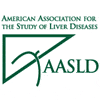 Viread (tenofovir) is highly effective at suppressing hepatitis B virus (HBV), even after an eight-year period, aidsmap reports. Researchers reported findings from Gilead Sciences’ Phase III Study 102 and Study 103 at the Annual Meeting of the American Association for the Study of Liver Diseases (AASLD) in Boston.
Viread (tenofovir) is highly effective at suppressing hepatitis B virus (HBV), even after an eight-year period, aidsmap reports. Researchers reported findings from Gilead Sciences’ Phase III Study 102 and Study 103 at the Annual Meeting of the American Association for the Study of Liver Diseases (AASLD) in Boston.
There were about 600 enrollees between the two trials, with Study 102 enrolling hepatitis B ‘e’ antigen (HbeAg)-negative participants, while Study 103 enrolled HBeAg-positive participants. Most of the participants were treatment naive and about a quarter had cirrhosis.
The participants in both trials were randomly assigned to receive Viread or Preveon (adefovir) for 48 weeks. At the end of that time all the participants were permitted to continue taking Viread, and those who had a detectable HBV viral load while taking Viread could, if they chose, add Emtriva (emtricitabine) after the 72-week mark (meaning they were effectively taking Truvada, which contains tenofovir and emtricitabine).
After 384 weeks, or about eight years, 75 percent of the original crop of HBeAg-negative participants and 58 percent of the original group of HBeAg-positive participants had a fully suppressed viral load. When looking just at the participants who remained on treatment until this point in the study, the viral suppression rates were a respective 99 percent and 98 percent.
Twenty (3.4 percent) of the participants lowered their Viread dose, or interrupted or stopped treatment, because of kidney-related side effects. Two percent of the partcipants developed low bone mineral density at the hip and 3.1 percent of the participants did so at the spine. A total of 1.2 percent of participants progressed from low mineral density to osteoporosis at the hip, with 1.9 percent doing so at the spine. On the other hand, 2 percent of the participants improved from low to normal bone mineral density at the hip, while 4.4 percent did so at the spine. The study group experienced 34 bone fractures (5.3 percent), which were mostly a result of trauma and not bone loss.
To read the aidsmap story, click here.
Advertisement
Advertisement
Advertisement






Comments
Comments